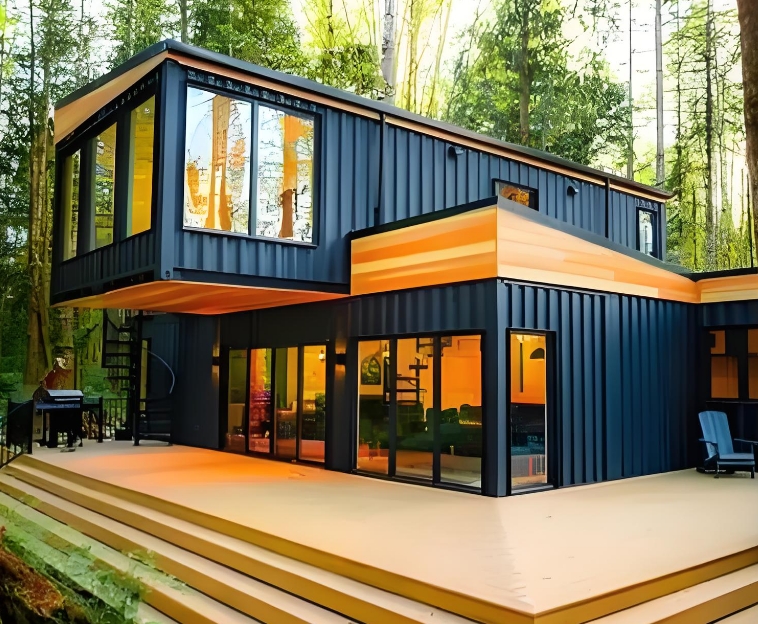Modified container house in daily life
Modified container house in daily life
Modified container house are widely used in daily life, and their modularity, mobility and quick erection make them play an important role in many scenarios. The following are some examples of the application of containerized housing in daily life:
Temporary Shelter: In construction sites, disaster relief sites or temporary activities, containerized houses are often used as temporary shelter for workers or emergency relief shelters. They can be built quickly to provide basic living conditions for workers or disaster victims.
Vacation Cabins: Container homes are also used as vacation cabins or leisure retreats due to their unique design and customizability. Some people will choose to build container houses in scenic locations as a place to stay for a relaxing vacation or weekend getaway.
Commercial Use: Container houses can be used for a variety of commercial purposes, such as small stores, coffee shops, and restaurants. Their appearance can be creatively designed to attract customers' attention. Meanwhile, container houses are also suitable for mobile commercial activities such as bazaars and exhibitions.
Offices and studios: Some businesses or individuals choose to use container houses as offices or studios. These houses can be used for internal space planning and decoration as needed to meet different office needs.

Two types of container houses and their characteristics in detail
Modified container house are mainly divided into two types: containers for construction and containers for cargo. Here are their detailed differences and characteristics.
Characteristics of containers for construction 🏠
Compliance with the Building Standards Act: Containers for construction comply with the Japanese Building Standards Act and can be used directly as living space.
Safety: Even with large opening areas such as windows or doorways, the structural balance is not easily disturbed, ensuring safe living.
Use of JIS-compliant steel: Containers for construction are made of steel that conforms to JIS (Japanese Industrial Standards) and are welded in JIS-certified factories.
Characteristics of containers for cargo 🚚
Non-compliance with the Building Standards Act: Originally used for cargo transportation, cargo containers do not comply with the Building Standards Act and require modification.
International ISO standard: International ISO standard is used for manufacturing and does not conform to JIS standard.
Risk and cost of remodeling: Although it is possible to comply with the Building Standards Act through remodeling, the risk and cost are high.
Important points of container house construction 🏗️
Important points of container for construction 🌟
Compliance with the Building Standards Act: containers for construction comply with regulations and can therefore be legally used as living space.
Safety: Strength is ensured and safety is improved even in a residential environment.
Risks of containers for cargo ⚠️
Possible illegal construction: Since they do not comply with the Building Standards Act, they may violate the code without remodeling.
High remodeling cost: Remodeling to comply with JIS steel and standards is expensive.
Impact of open parts 🚪
Strength of construction containers: Strength is maintained even with large opening parts. The structural balance is not easily disturbed by the use of beam-post structure.
Strength of Container for Cargo: The opening part causes the structural balance to be disrupted and the strength is reduced. In order to maintain strength, additional reinforcement is required during the remodeling process.
The use of containers for construction is very important in construction projects, taking into account safety and regulations.


